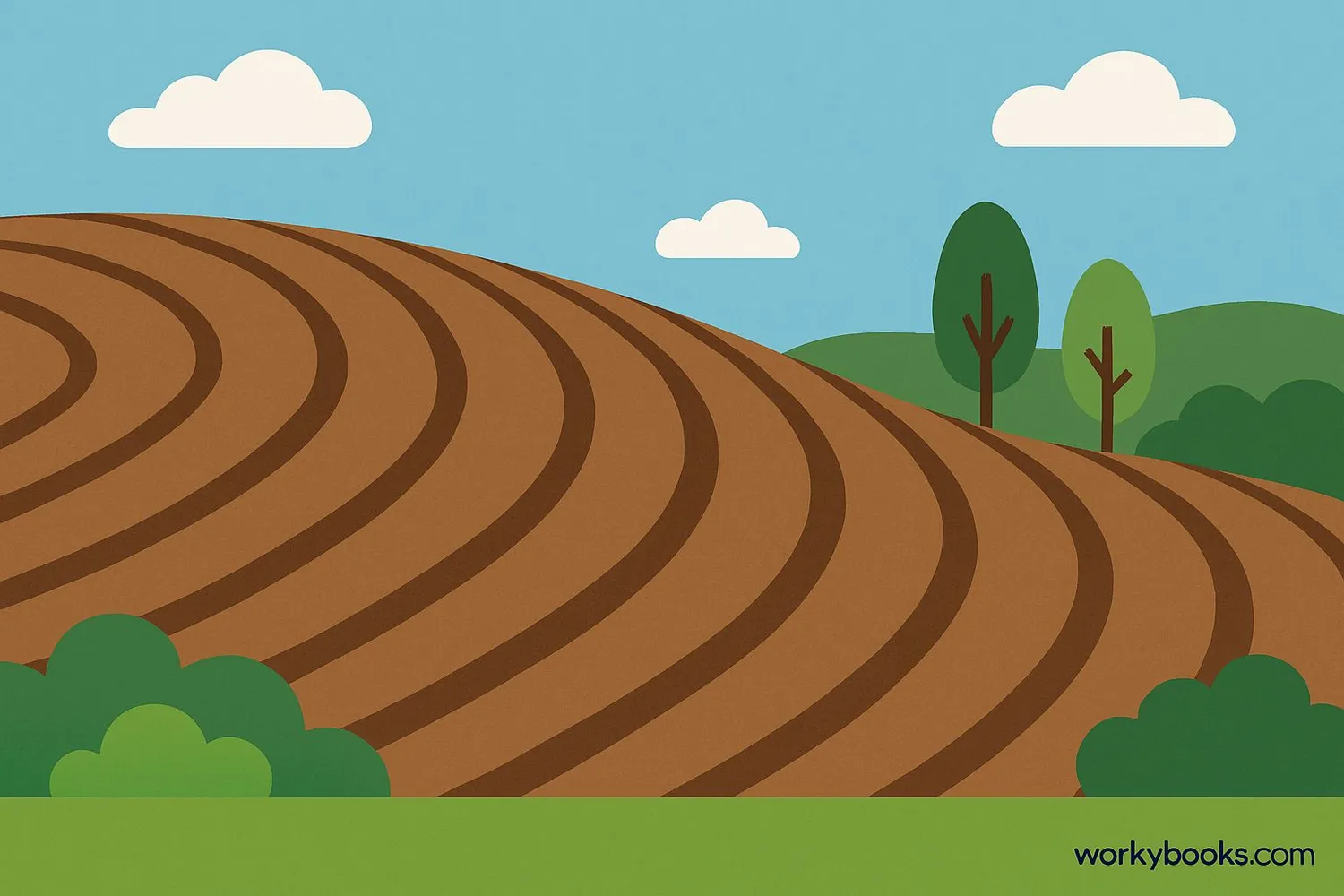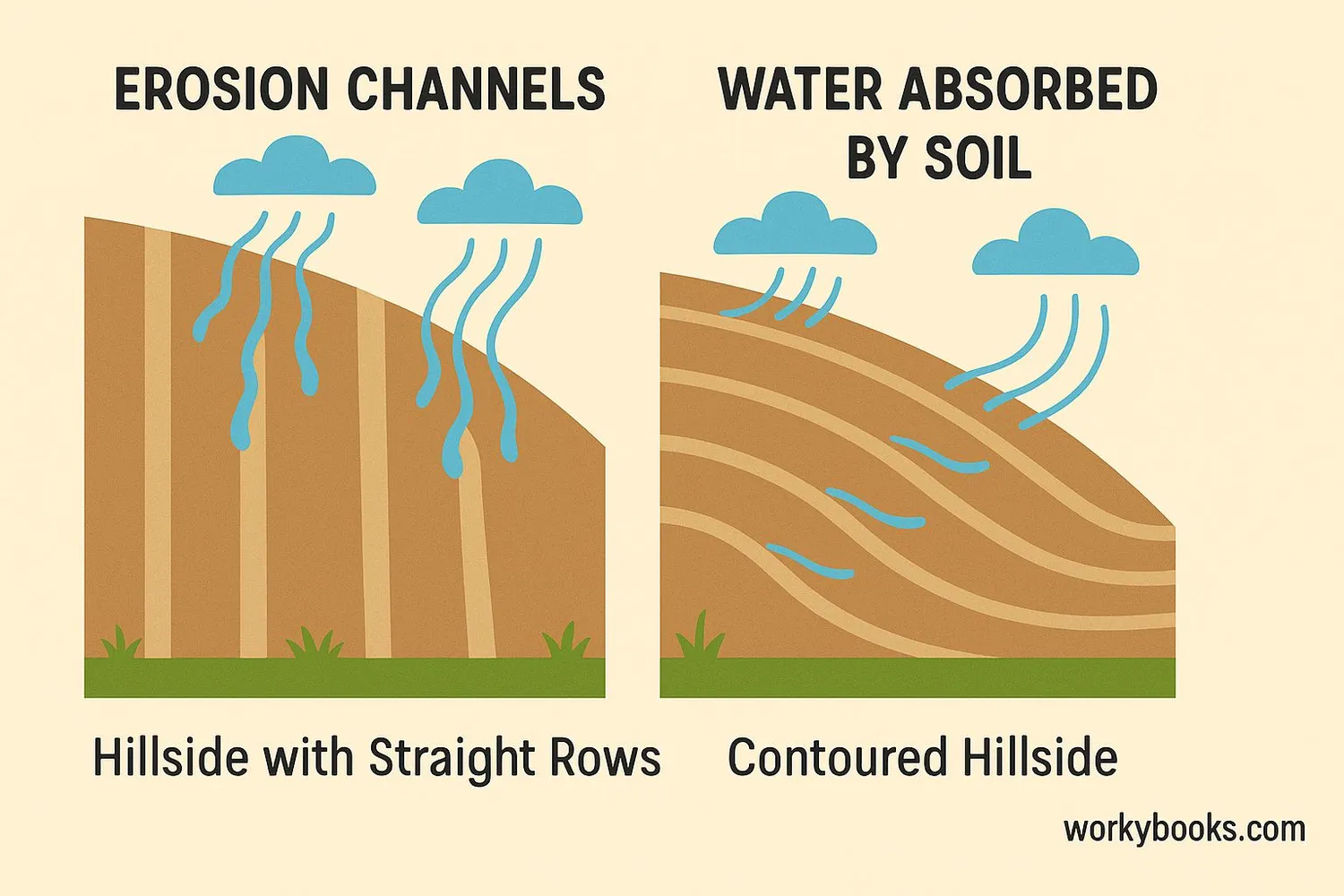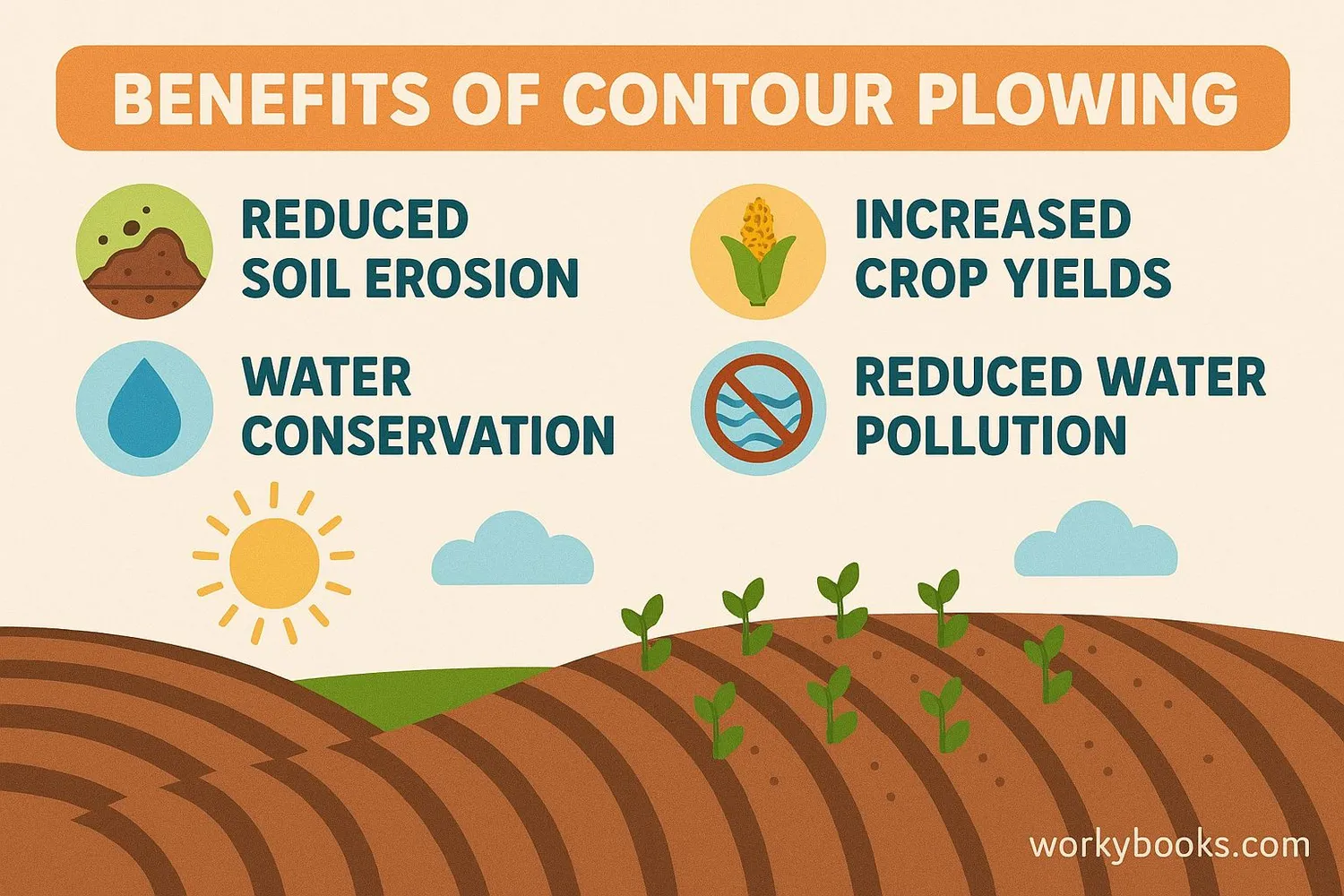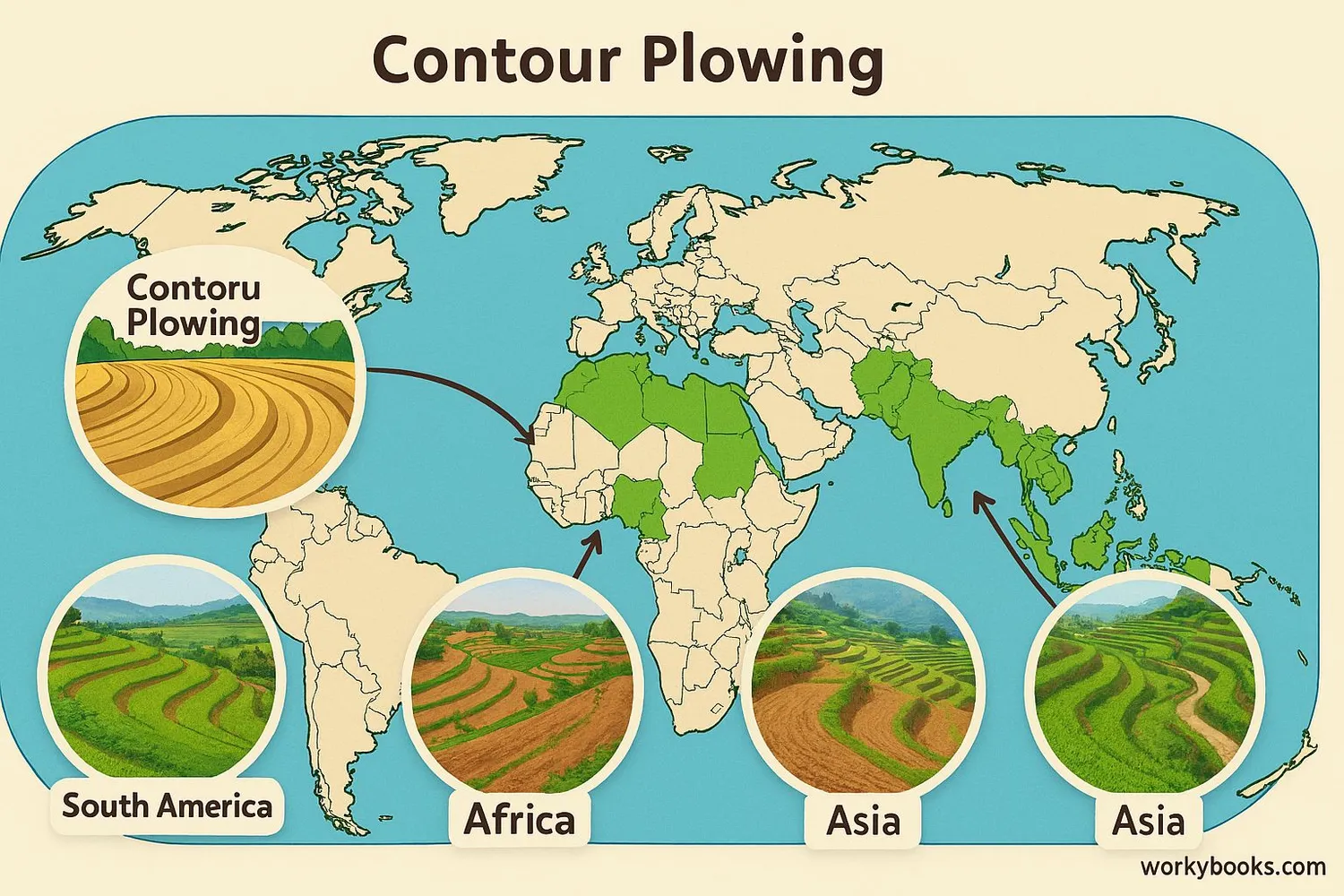Contour Plowing - Definition, Examples, Quiz, FAQ, Trivia
Discover how farmers protect soil and grow food on hillsides
What is Contour Plowing?

Contour plowing is a special farming technique where farmers plow their fields along the natural curves of the land instead of plowing straight up and down hills. It's like drawing lines along the shape of the land rather than against it.
When farmers plow across a slope following its elevation contour lines, they create natural ridges that slow down rainwater. This prevents soil from washing away during heavy rains. Imagine it like creating small speed bumps for water as it flows downhill!
Soil Fact!
It takes nature 500-1,000 years to create just 1 inch of topsoil. Contour plowing helps protect this precious resource!
How Contour Plowing Works

Contour plowing works by creating natural barriers that slow down rainwater and help it soak into the soil instead of washing soil away. Here's how farmers use this technique:
Study the Land
Farmers examine the shape and slope of their fields
Follow Contours
Plow lines are created along the natural curves of equal elevation
Create Ridges
Each plowed row forms a small ridge that slows water flow
Plant Crops
Seeds are planted along these contour lines
Slow Water
Rainwater is captured and absorbed instead of running off
This technique is most effective on slopes between 2% and 10% grade. On steeper slopes, farmers often combine contour plowing with other methods like terracing or strip cropping for even better soil protection.
Water Conservation!
Contour plowing can reduce water runoff by 30-50%, helping crops get more water during dry periods.
Benefits of Contour Plowing

Contour plowing provides important benefits for farmers and the environment:
Soil Protection
Reduces soil erosion by 30-50%, preserving valuable topsoil
Water Conservation
Helps soil absorb more rainwater, reducing runoff
Better Crops
Improves crop yields by 5-10% by keeping nutrients in place
Additional benefits include:
• Reduced pollution in streams and rivers
• Less fertilizer needed since nutrients stay in fields
• Lower fuel costs for farmers since tractors work across slopes
• Protection of wildlife habitats by keeping soil out of waterways
These benefits make contour plowing an important tool for sustainable farming that protects our environment while growing the food we need.
Examples of Contour Plowing

Contour plowing is used around the world in hilly farming regions:
United States
Common in Appalachian region and Midwest hills
Central America
Used on coffee farms in mountainous regions
Asia
Practiced on rice terraces in the Philippines
One of the most famous examples is the contour-plowed fields of the Palouse region in Washington state. These rolling hills produce wheat, barley, and lentils using contour farming techniques that prevent erosion while creating beautiful curving patterns across the landscape.
In Africa, contour plowing is being taught to small farmers to help combat desertification and improve food security in regions with unpredictable rainfall.
Historical Note
Contour plowing became widely adopted in the US after the Dust Bowl of the 1930s, when soil conservation became a national priority.
Contour Plowing Quiz
Test your knowledge about contour plowing with this quiz! Answer all 5 questions to see how much you've learned.
Frequently Asked Questions
Here are answers to common questions about contour plowing:
Contour Plowing Trivia
Discover interesting facts about contour plowing:
Ancient Origins
Contour farming techniques date back over 2,000 years! Ancient cultures in Peru, China, and the Philippines used similar methods to farm steep mountainsides.
Water Impact
Contour plowing can reduce water runoff by up to 50%, significantly decreasing pollution in nearby streams and rivers from soil and fertilizer.
Modern Technology
Today, farmers use GPS technology to map contours with precision accuracy, creating perfect contour lines even on complex landscapes.
Wildlife Benefits
The curving patterns of contour-plowed fields create diverse habitats that support more wildlife than straight-row fields, especially beneficial for birds and pollinators.


